Decatur’s Mystery Photo – Part II
Posted by: Loren Coleman on September 25th, 2006
Thanks to many readers’ contributions to the analysis of the latest mystery photograph passed along to Cryptomundo. Please refer to part one’s many comments for more background.
Click on image for full-size version
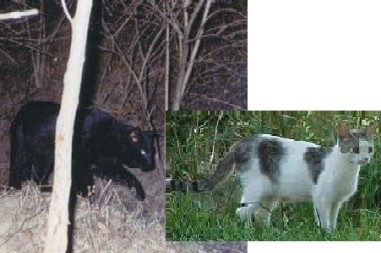
Click on this image of a black Burmese named “Patch,” compared to a size 10 shoe, for a larger version.
As I wrote to the Eastern Puma Research Network on September 23, 2006, after they expressed a desire to post their as-yet-unreleased felid photograph on Cryptomundo, I would do so, as an exercise in critical cryptozoological thinking, if it was open to comments. But to me what is pictured in “this photo looks very much like a house cat.”
The definitive “cryptid black panther” photograph from eastern North America is not to be found in this November 2004 example.
About Loren Coleman
Loren Coleman is one of the world’s leading cryptozoologists, some say “the” leading living cryptozoologist. Certainly, he is acknowledged as the current living American researcher and writer who has most popularized cryptozoology in the late 20th and early 21st centuries.
Starting his fieldwork and investigations in 1960, after traveling and trekking extensively in pursuit of cryptozoological mysteries, Coleman began writing to share his experiences in 1969. An honorary member of Ivan T. Sanderson’s Society for the Investigation of the Unexplained in the 1970s, Coleman has been bestowed with similar honorary memberships of the North Idaho College Cryptozoology Club in 1983, and in subsequent years, that of the British Columbia Scientific Cryptozoology Club, CryptoSafari International, and other international organizations. He was also a Life Member and Benefactor of the International Society of Cryptozoology (now-defunct).
Loren Coleman’s daily blog, as a member of the Cryptomundo Team, served as an ongoing avenue of communication for the ever-growing body of cryptozoo news from 2005 through 2013. He returned as an infrequent contributor beginning Halloween week of 2015.
Coleman is the founder in 2003, and current director of the International Cryptozoology Museum in Portland, Maine.

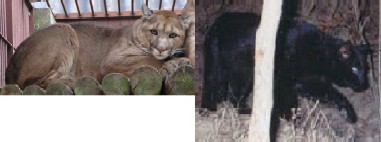
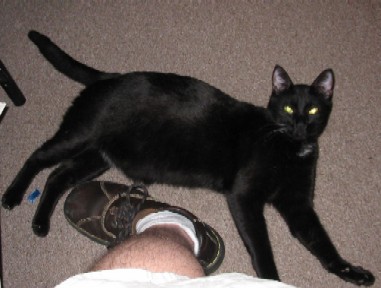





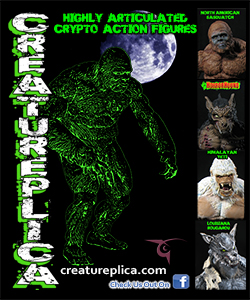
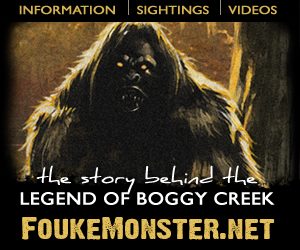
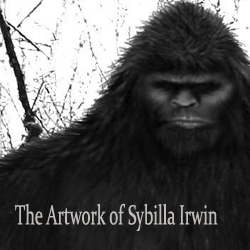
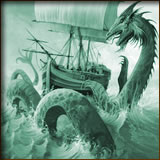
Hmmmm – I voted for domestic cat on the other thread, but when you put the photos side by side like that the mystery cat does look more anomalous.
It could be the angle, but the snout looks longer and more pronounced – more pronounced than the domestic cats pictured. The mystery cat also looks much more stout and robust, although this also could be due to the angle. In any case that’s one tough-looking domestic cat. Hybrid maybe? A case of a feral cat growing larger like the Australian case?
This is a housecat. It is moving away from the camera at an angle, and looking back, over its right shoulder. It shows no fear of the person with the camera but does have the head down in the curious cat fashion.
There is nothing to show this cat is large at all and we are being mislead thinking so. The surroundings are small brush not trees.
I believe it was mentioned that the person responsible for the photo was hunting. So why are we looking at a picture rather then a dead animal. It takes more time to set up a camera then it does to shoot a gun.
I think we are having our leg pulled again. It seems to me a lot of people are going out of their way to make fools of the people on this site and I can’t help but wonder why.
I think that the impression of a broader nose/snout is a function of the very sharp shadows — for comparison, look at how sharp the shadows thrown by the brush in the foreground are cast against the hill in the background — which also tells me that this photo was taken at *very* close range…
I still would like to know why, then, this photo — or even any mention of it — does not appear on EPRN’s website if they are convinced that this is a really big cat.
The face looks longer than it is due to the sharp shadows. If you look carefully that is obvious.
This is a house cat.
Is the white and gray cat not a much younger animal? It seems to have a post-kitten look to it so its head shape and size seem different. I admit to loathing cats as pets so I’ve never owned one. It is probably a bad comparison choice but I still agree with everyone, it’s a house cat. I also agree that this site is plagued by people wishing to dupe others, which needn’t be obnoxious; it’s kind of funny and sharpens one’s logic. It’s easy to dismiss, it’s harder to disprove. Saying that is OBVIOUSLY a house cat is one thing but then to start analyzing the situation and looking for independent data to support your conclusion takes you to the next level.
Well even taking the angle and shadow into account the mystery cat’s jaw and face are longer and more pronounced – at least more than the other domestic cats pictured for comparison. Maybe the domestic cats pictured are more short-faced. I’m not a real cat person – anyone have any pictures of longer-faced domestic cats?
For the record, I don’t argue that there are no Panthers in Illinois, this just isn’t one of them. We have panthers here in Georgia as well. I’ve seen them up close and personal and heard them, I know numerous people who have seen them. In fact, it’s considered common knowledge amongst old timers. Until recently, I wasn’t even aware that the general concensus was that there aren’t any viable populations east of the Mississippi. This is patently false and a ludicrous statement. Although not as common as they once were, they are still here. It appears, at least to me, that the cats, like wolves, have learned to avoid humans.
Generally, when these big cats are observed in the wild it’s a happenstance occasion. The P.c. (Puma concolor) are consumate predators and have these massive nasal cavities like most big cats, and they can smell us coming long before we know they are there. The also have massive paws with fur and really thick pads that cushion the sounds of foot falls. They have excellent hearing with parabolic ears that rotate making them directional, much like an old radar or hud-fud antenna. They easily avoid us.
Which brings to bear the reason these animals and the hunt for them are so important to cryptozoology. If such a well documented animal can go undetected by mainstream science, we must then ask ourselves, what else is out there? How can we trust the opinion of the “straights”? The answer, we can’t. We must go out and look for ourselves, and I, for one, would have it no other way.
The white and grey is an adult feral felis domesticus. The point of the comparison is to show size relationship using the skull size as a point of reference. Even if this were a young feral it would only strengthen the case that the “mystery cat” is no Big Cat. Even with the cougar(I think it’s name is Ares) lying down and curled up, it is obviously a much larger animal, while the house cat is approx. the same size. Leaving little doubt that this is merely a felis domesticus(?silvestris catus Burmese?)
I think at least 60% of “black panther” sightings are probably black burmese cats or other large house cats that are misidentified.
Actually Burmese cats are a dark chocolate brown (among other recognized colors). There is a breed that was derived from the Burmese, called the Bombay, that is shiny jet black.
This cat’s face is not any longer than any other average DSH (domestic shorthair) cat. It has the large muscular jowls of a tomcat. It is probably an unneutered tom.
Many Siamese cats or Siamese-mix cats have longer faces than the average domestic cat. Also many half-Siamese cats are black. Maybe this cat is part Siamese. Who knows?
It is still a domestic shorthair cat.
Comments, please. Not off-topic items, not conversations about pets, not badly written jottings that have to be deleted for misspellings and non-understandable passages, please.
Also, for those that have not picked up on it, there are automatic filters for profanity and any remarks about deletions.
Thank you for understanding.
There is nothing in this photo to lead me to believe that this is anything other than a house cat. If someone showed me this mystery photo and said it was their pet, I would not think twice about it. Let’s look at the distinct possibility of the obvious mundane explaination that this is probably a housecat unless more compelling evidence comes forward. There are a lot of photos out there, blobsquatch and what not that can turn out to be virtually anything the viewer wants to see. But I feel in this case, there is no strong evidence of this being anything other than a large, possibly feral common housecat.
I have a friend whose cat is a normal DSH, solid black from head to toe, and weighs roughly 30-35 lbs and probably about 2 1/2 feet long nose to tail. He isn’t overweight at all, but easily the same size as my uncle’s lab puppy (not sure of the age of the pup). He’s just a large cat, and could definately be mistaken for a young cougar if he got out of the house.
I’m pretty sure that’s what this is.
Still looks like a regular house cat.
As almost everyone believes this to be a house cat, I can’t let a consensus stand.
Young melanistic panther. It’s not what I believe, but it’s what I’ll say.
‘Tomcat jowls’ and thick fur can both explain the facial differences some are seeing — especially if they are both present.
I see Patch has that small spot of white just below the neck that I mentioned most black house cats have.
Well, after looking at all the pics, I can’t see any reason why that is anything but a housecat. I used to know a man who had a cat that was at least twice the size of any I’d ever owned, which he claimed was part bobcat. All I know is that the cat was too big to be picked up. So size really means nothing.
And though I’m not sure how relevant it is to the pic, my mother has 3 black cats that don’t have even a speck of white on them. And as far as the nose of the mystery cat, if it isn’t just shadows making it look odd, it could be beat up (scarred) from fighting. Tom cats can tear each other up pretty badly.
My question about the Australian cat was trying to lead to the idea that even though feral cats are no bigger than house cats and the African wildcat isn’t any larger, there are domestic breeds, like the Maine coon cat, that get quite big, therefore, if a local population of feral cat started out really large in the first place, wouldn’t their descendents have tended to increase in the same direction creating an abnormally large feral cat approaching lynx size?
It seems to me something like that could become its own species fairly quickly simply because it would have a hard time mating with anything smaller. It could be evolution in action.
One possibility is a wild/domestic hybrid. A few domestic cat breeds claim this wild-domestic mating as part of their lineage. Usually the results of this kind of mating end up being the 20+ lb cats. Since bobcats can be found in this area, it could be a bobcat + barn cat offspring. Look at the origins of the Pixie-Bob breed from the Pacific Northwest Red Bobcat.
As a semi-professional photographer I see some things that I find interesting in this picture. First, the shadows do in fact elongate the nose and the picture was taken from slightly above the subject at an angle that would suggest the photographer was bending down slightly or perhaps even crouched. Second, the tree immediately in front of the cat is washed out by the flash suggesting that the photo was taken at close range. Unless the camera used had a very strong flash, I would say that the cat is less than maybe 15 ft. away from the camera, or possibly it the cat tripped one of those infrared game cameras that hunters set up to check for game. in any case, it was taken at close range and the photo is nothing but a normal housecat.
If this feline was any other color than solid black, there would not even be a controvery at all. Try imagining this cat with tabby coloration. Or calico. Or Siamese. Or any of the other myriad colors & patterns of a housecat. It is only the black color that allows it even to be presented as a “mystery cat”. There is no mystery here.
I agree, kittenz. The black color gives it a certain mystique but a black housecat is still just a housecat. I agree there is no mystery here.
Black Jack, there you are. I’ve been looking for you. Here kitty kitty.